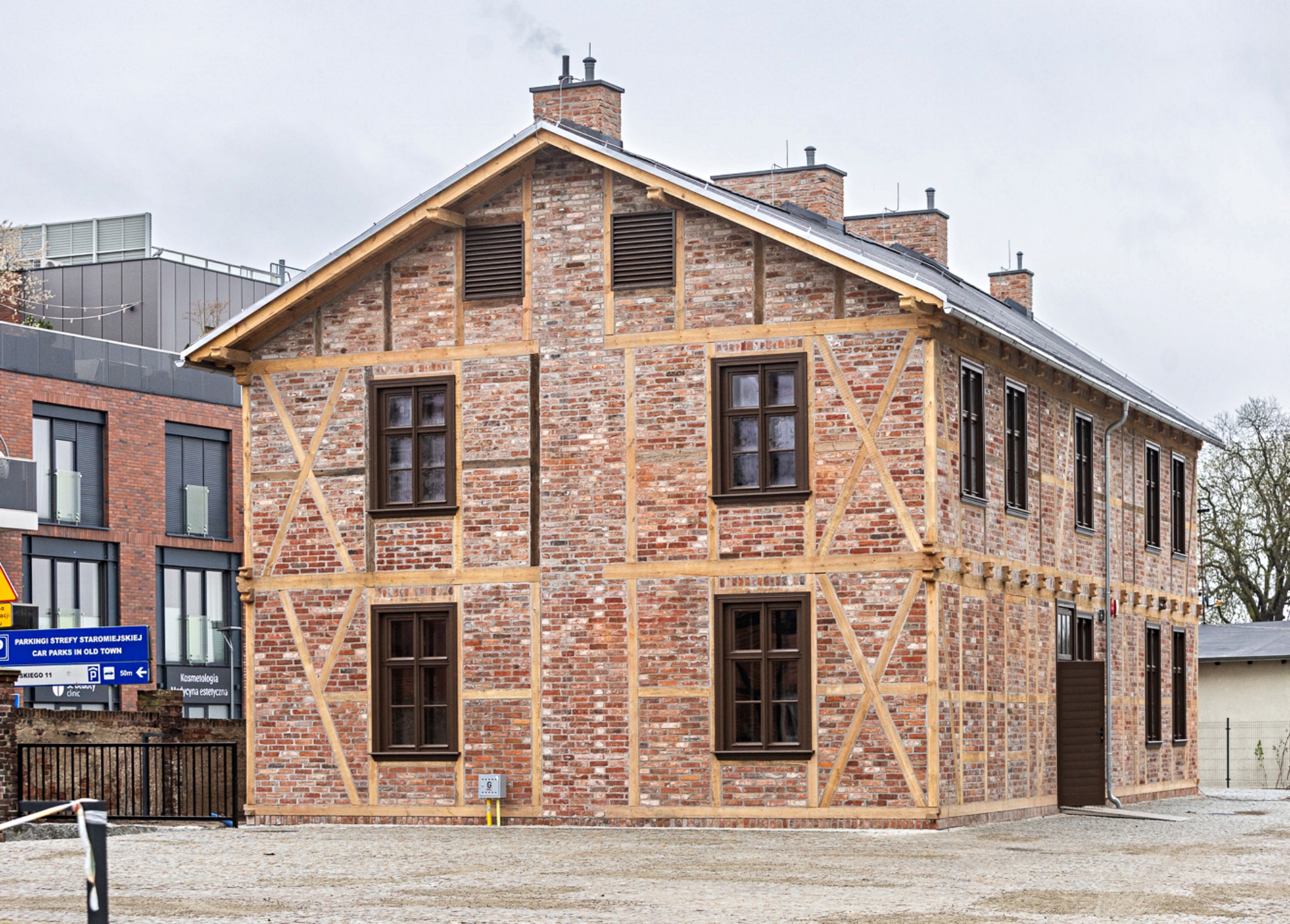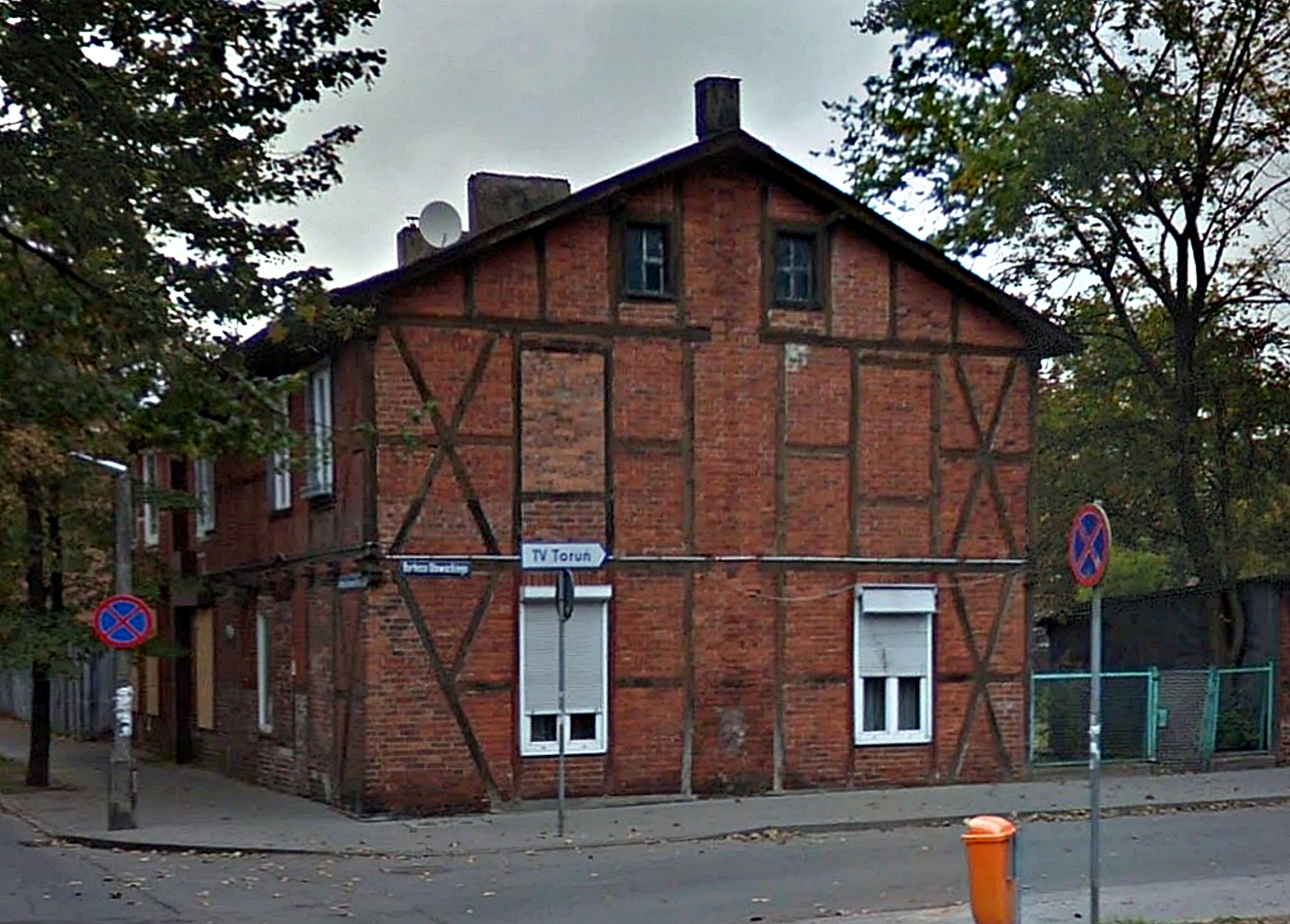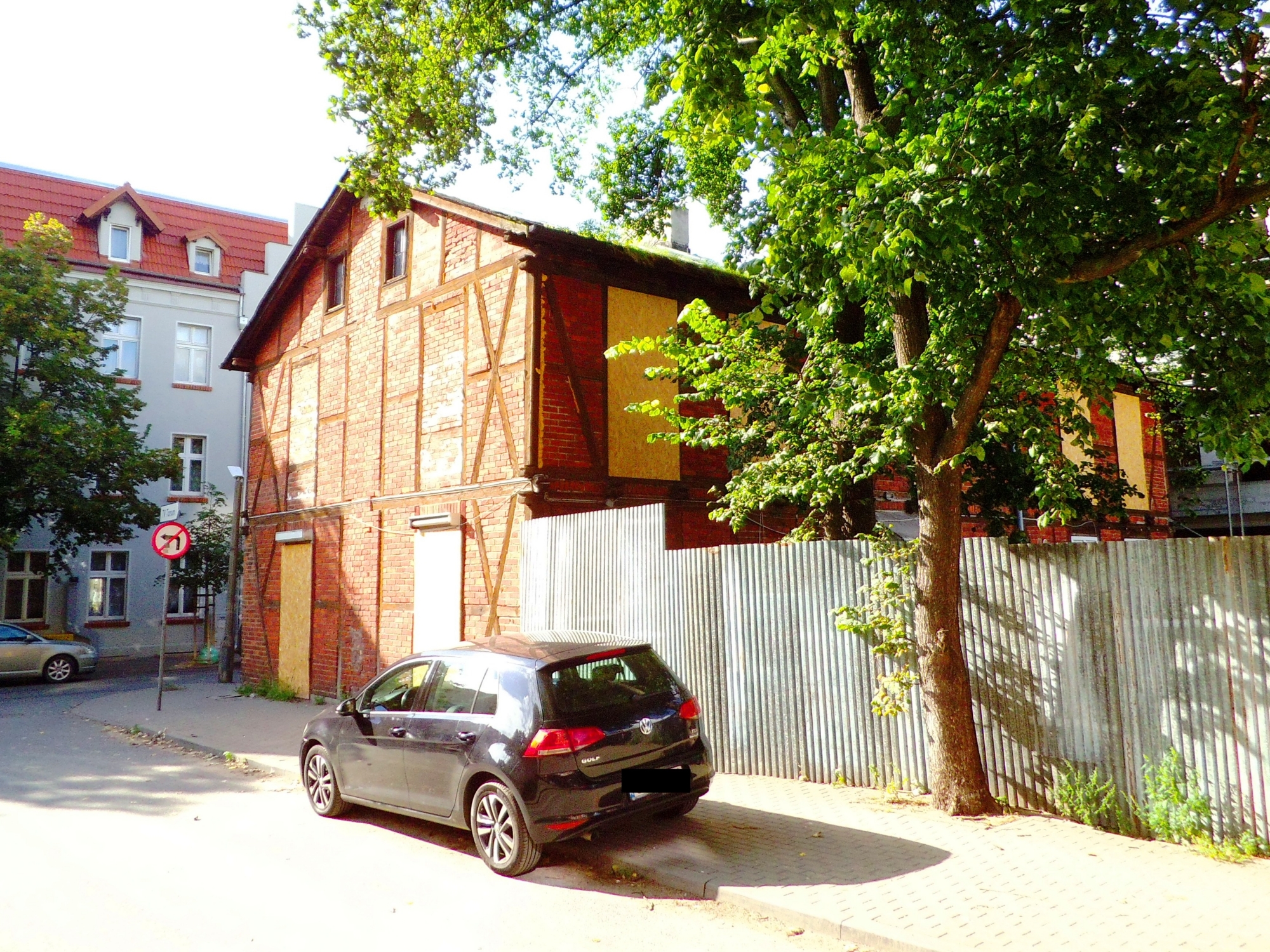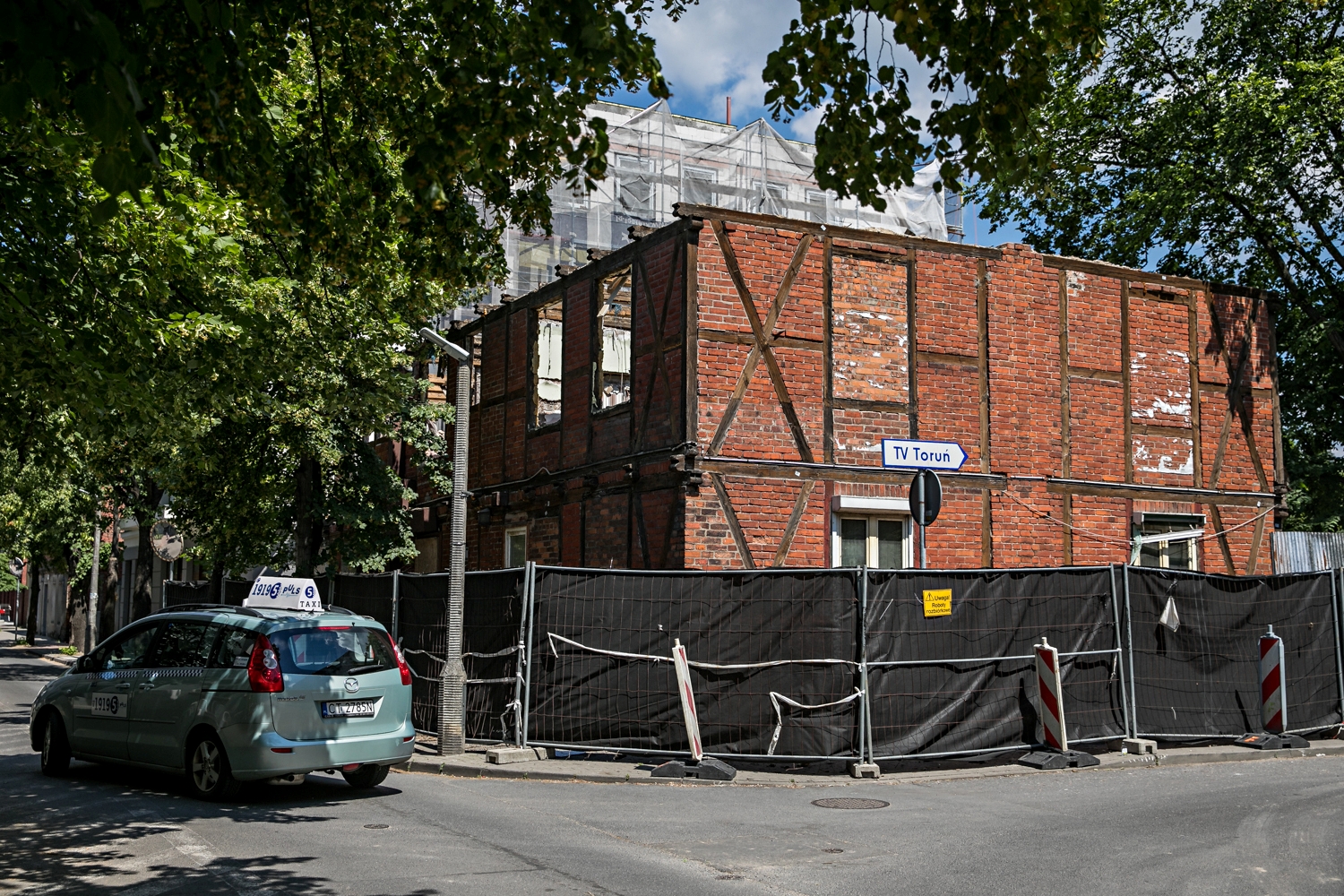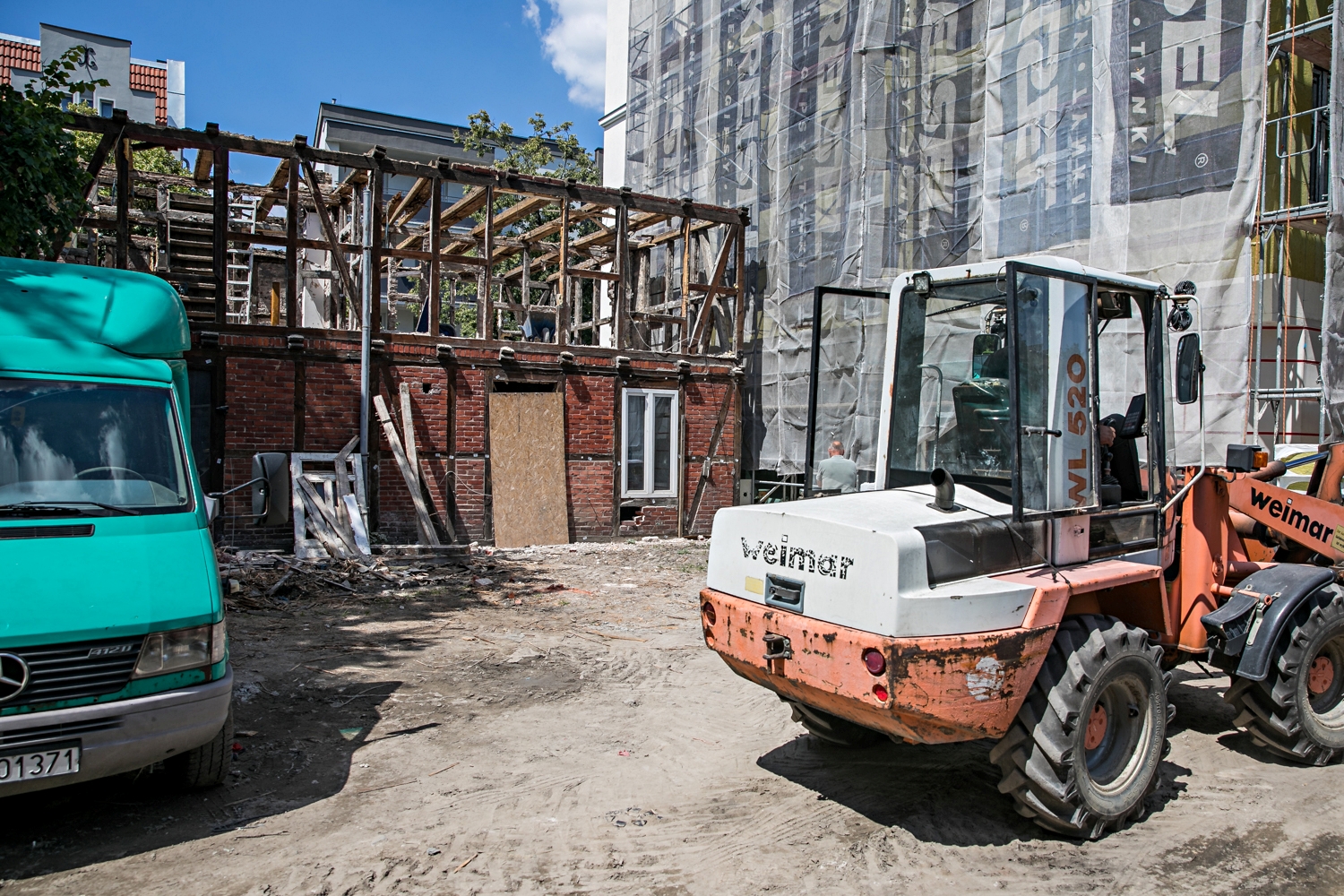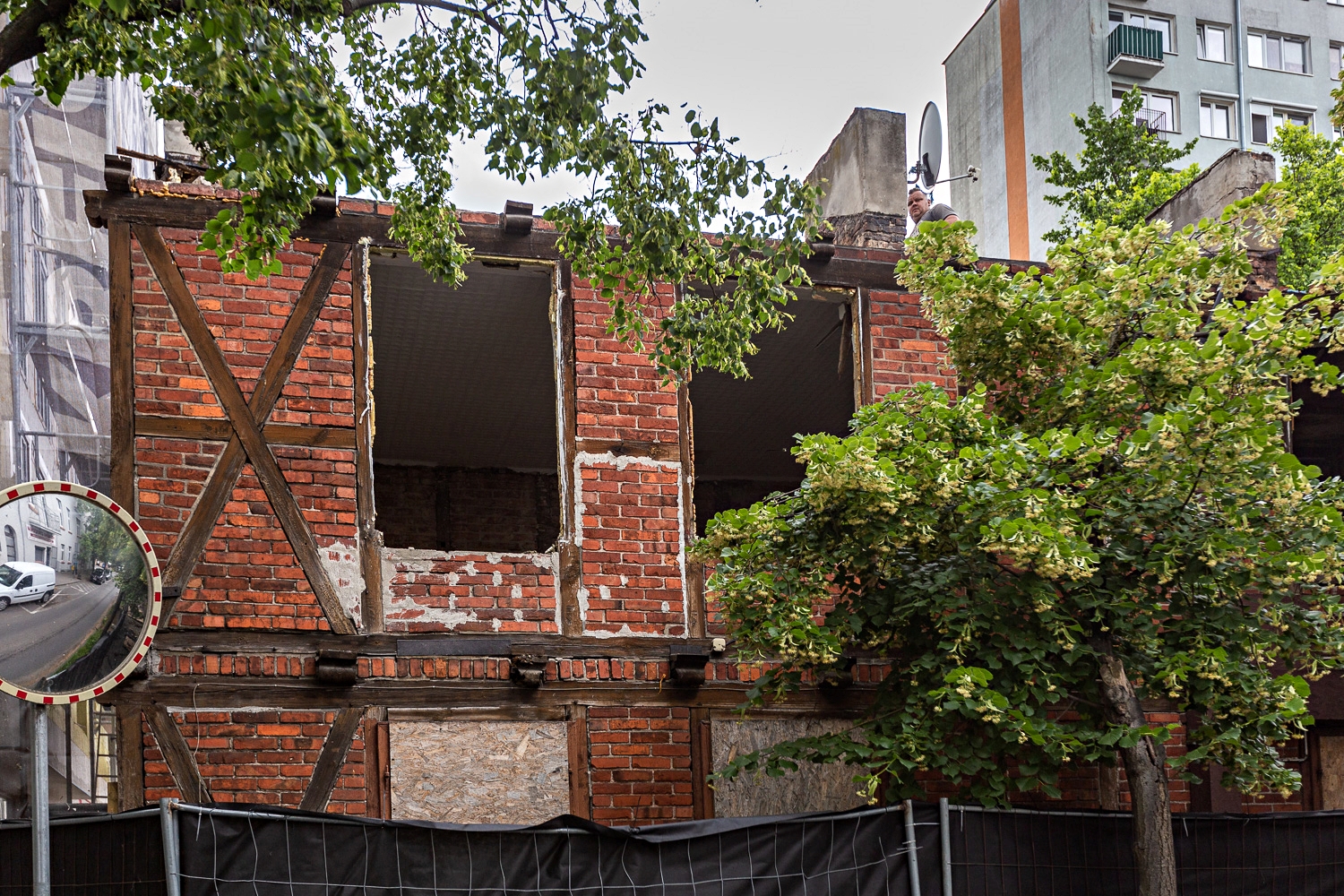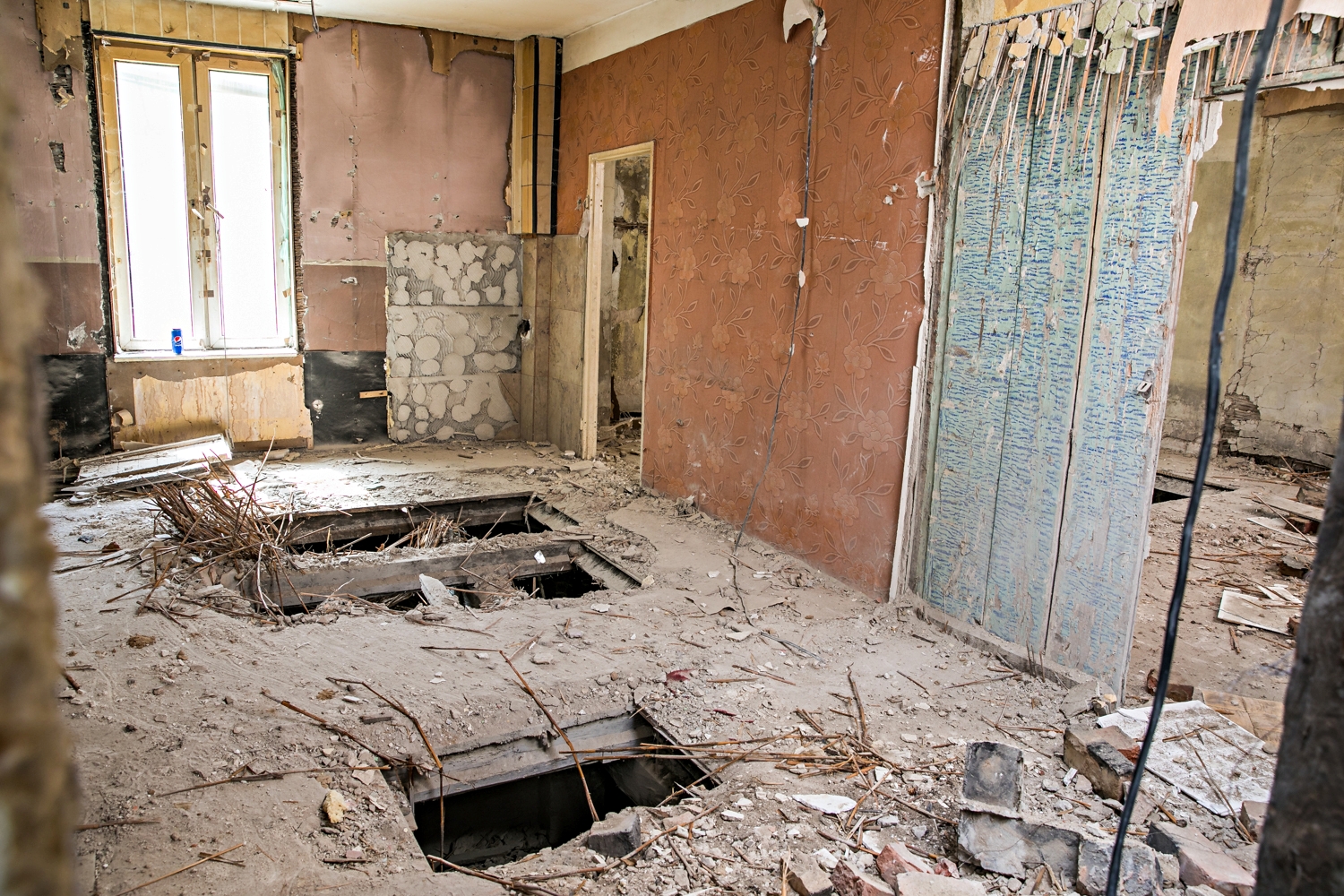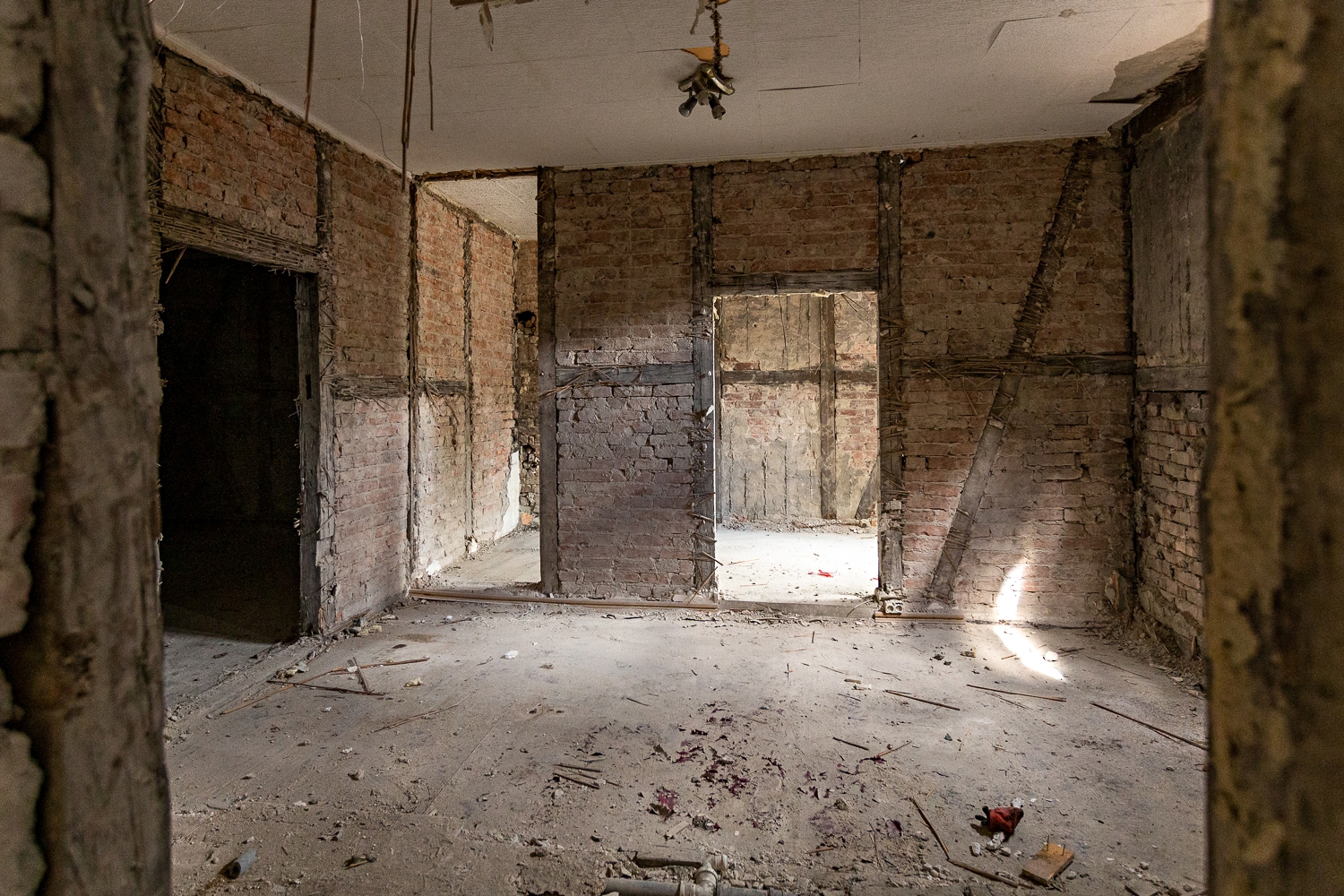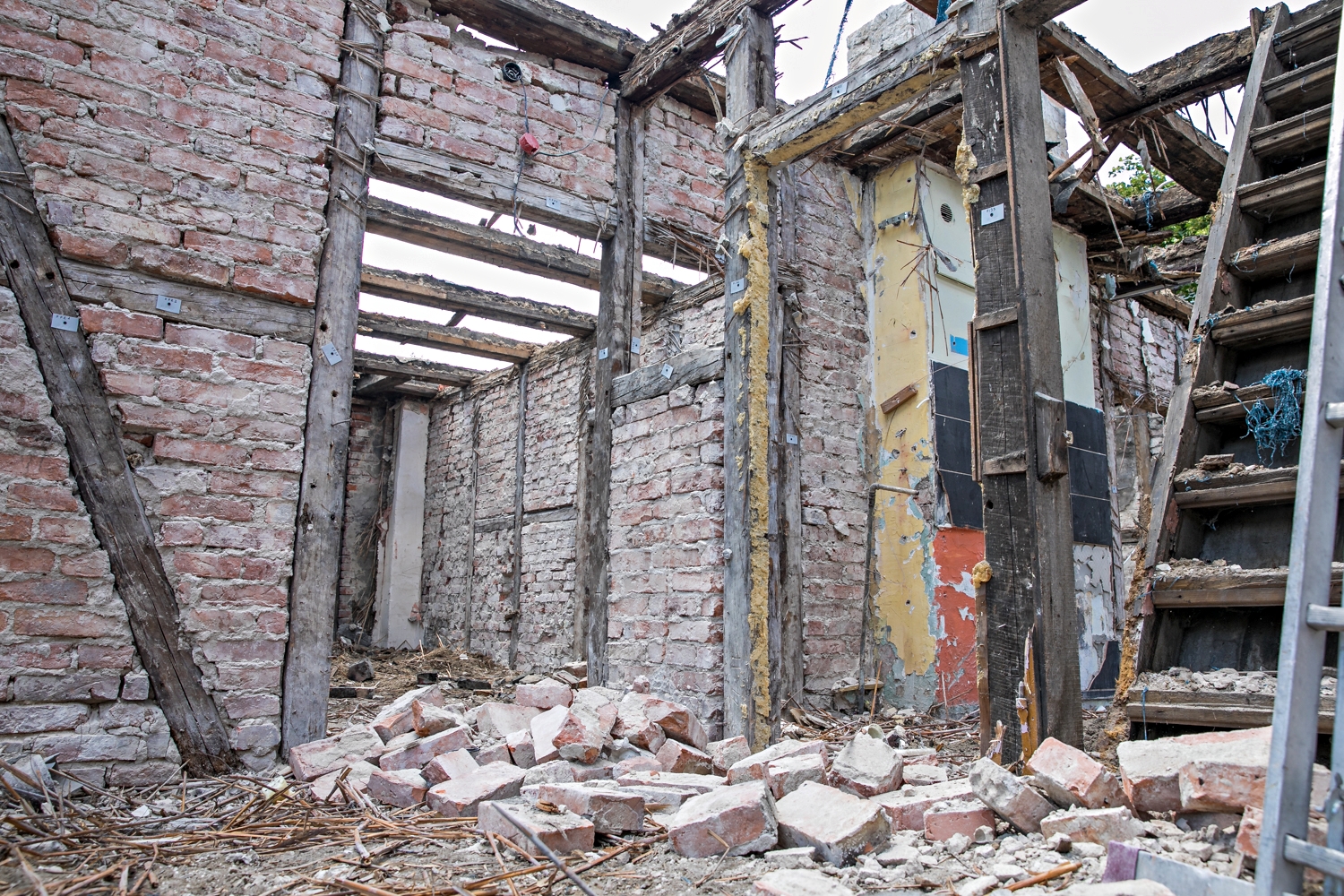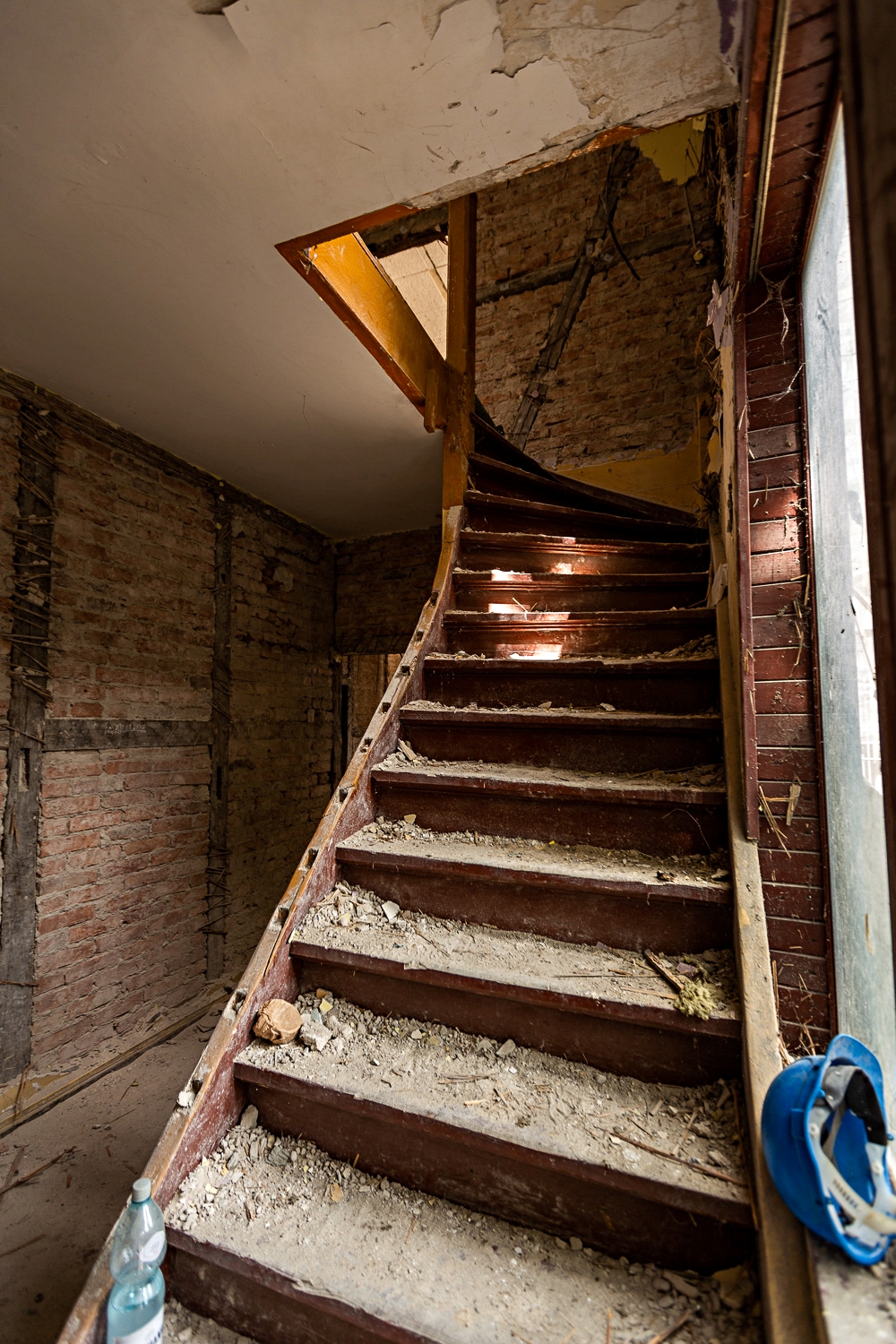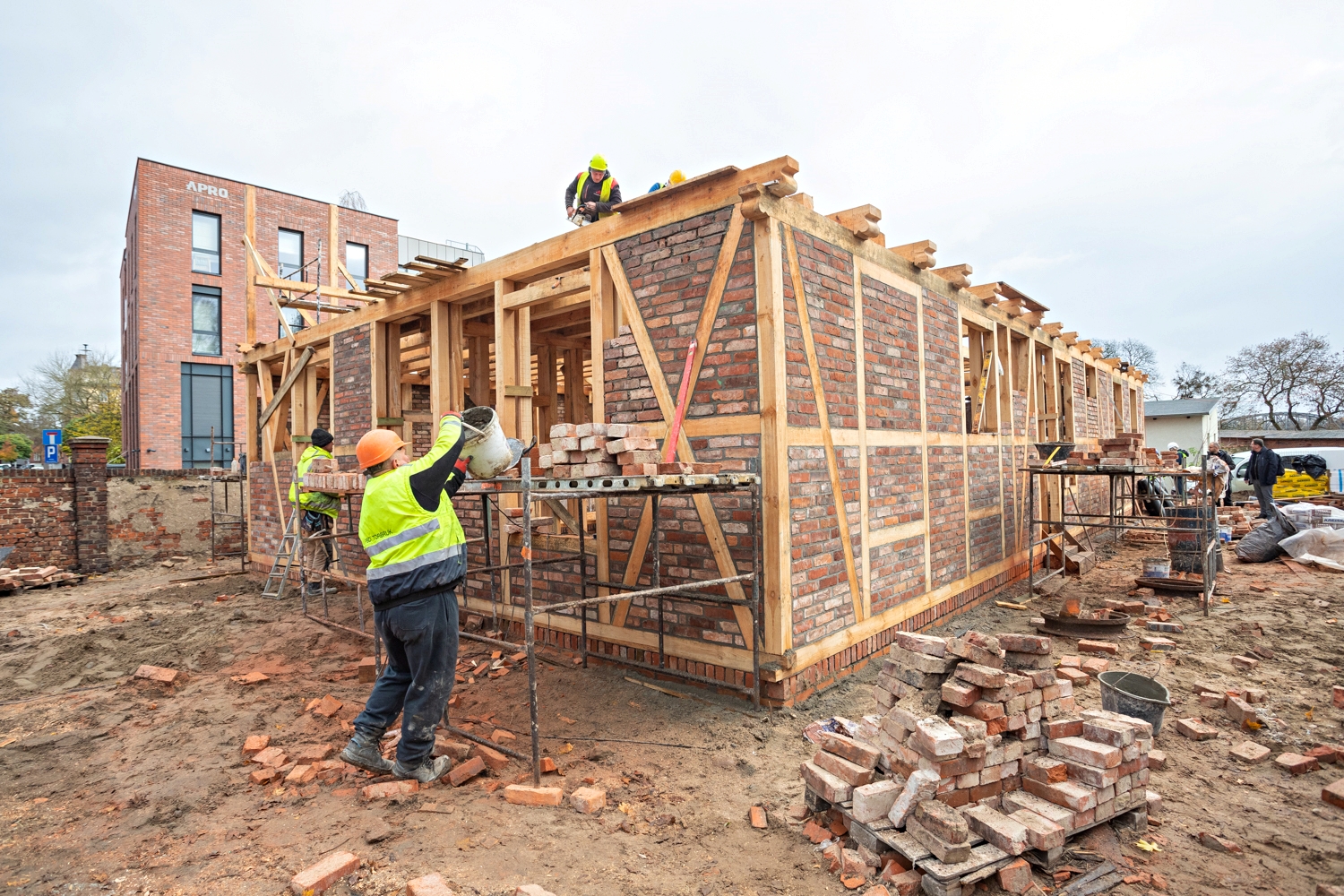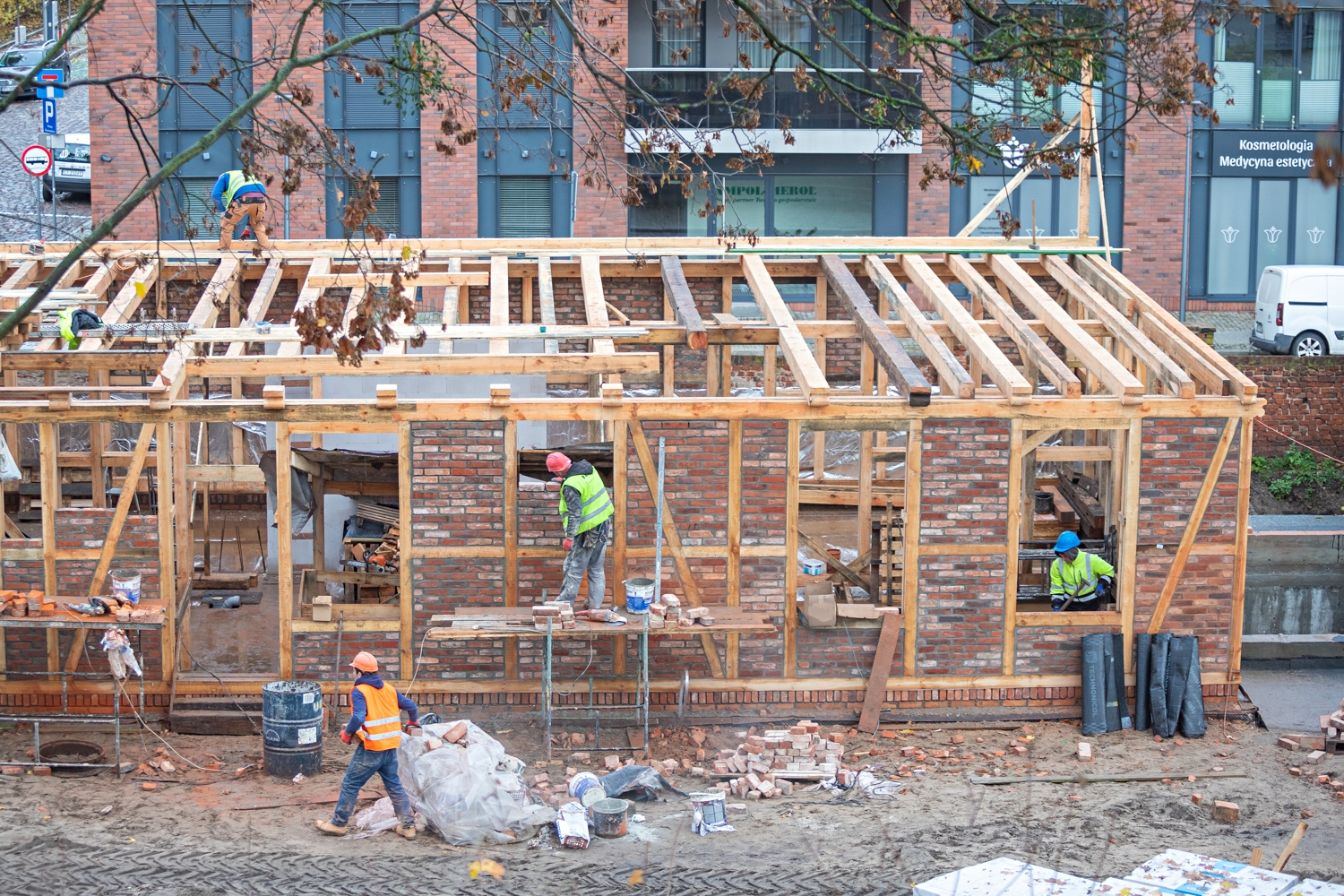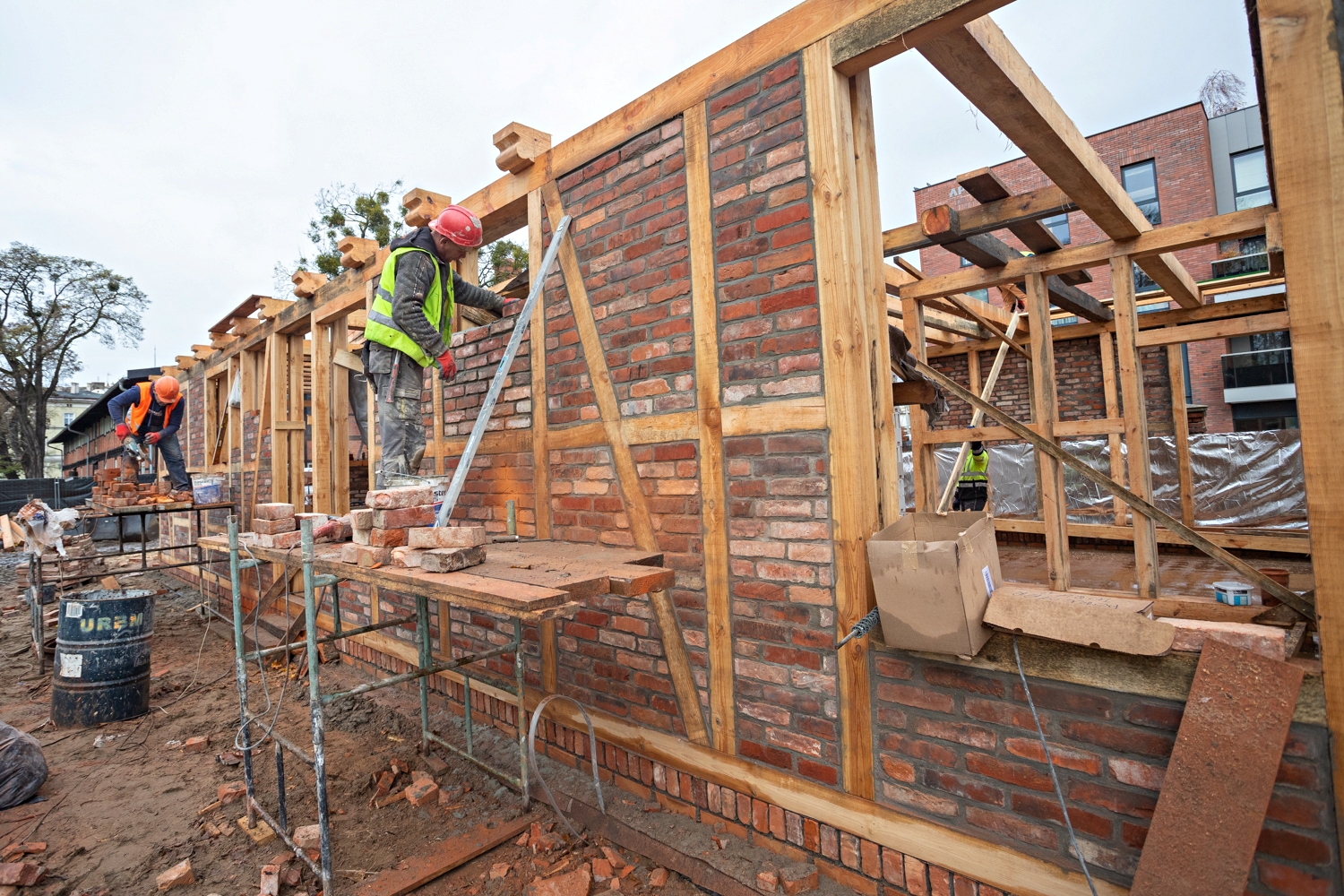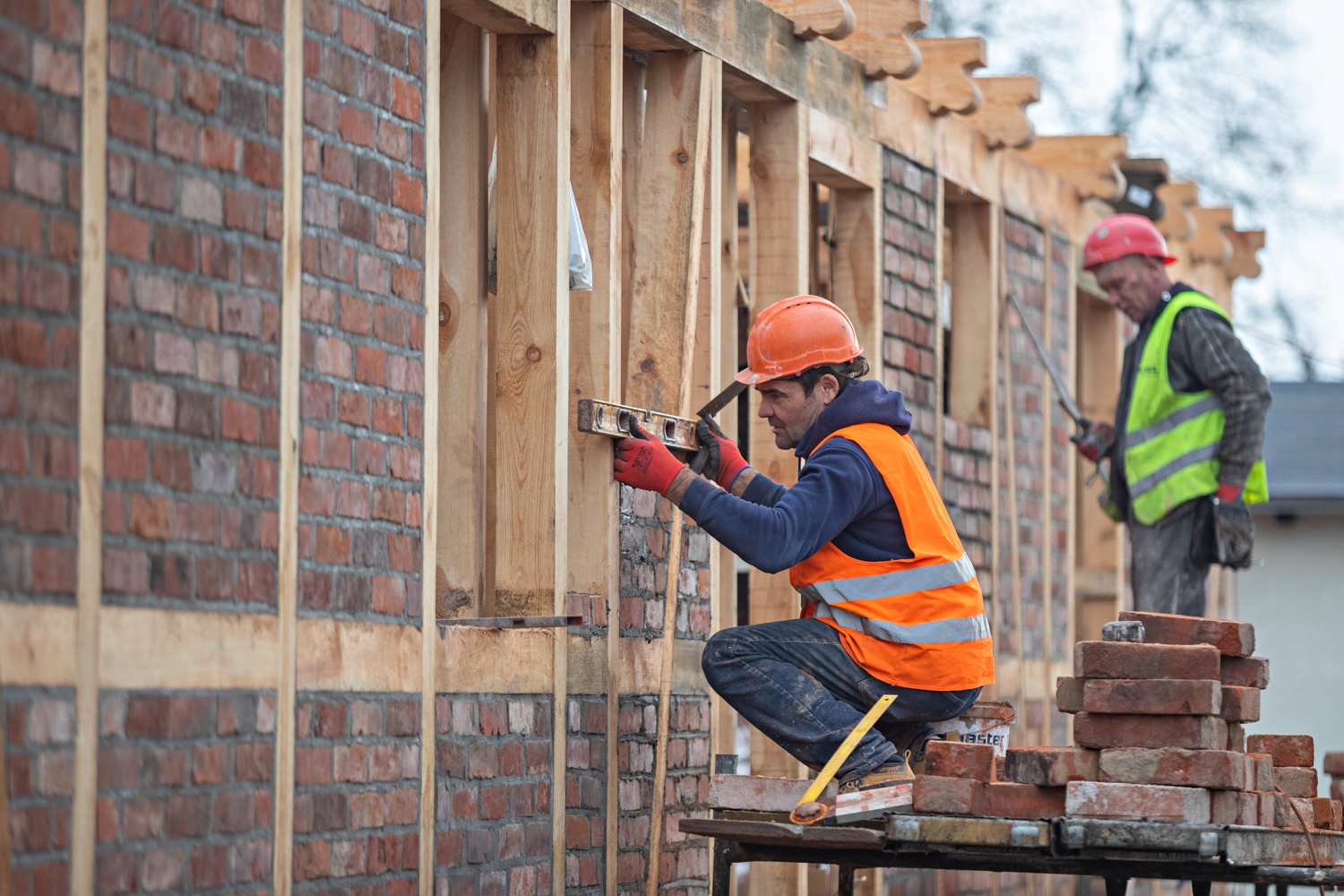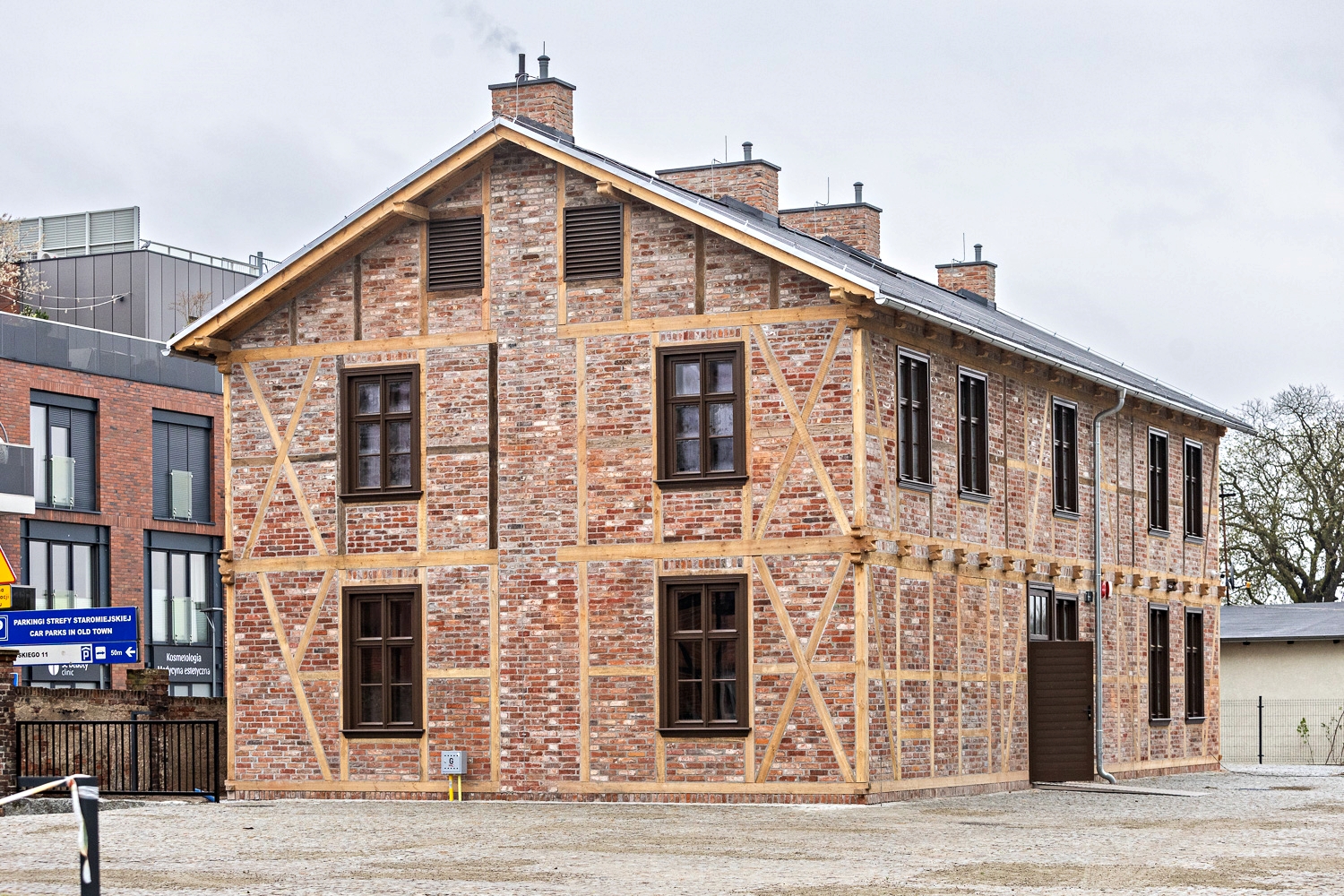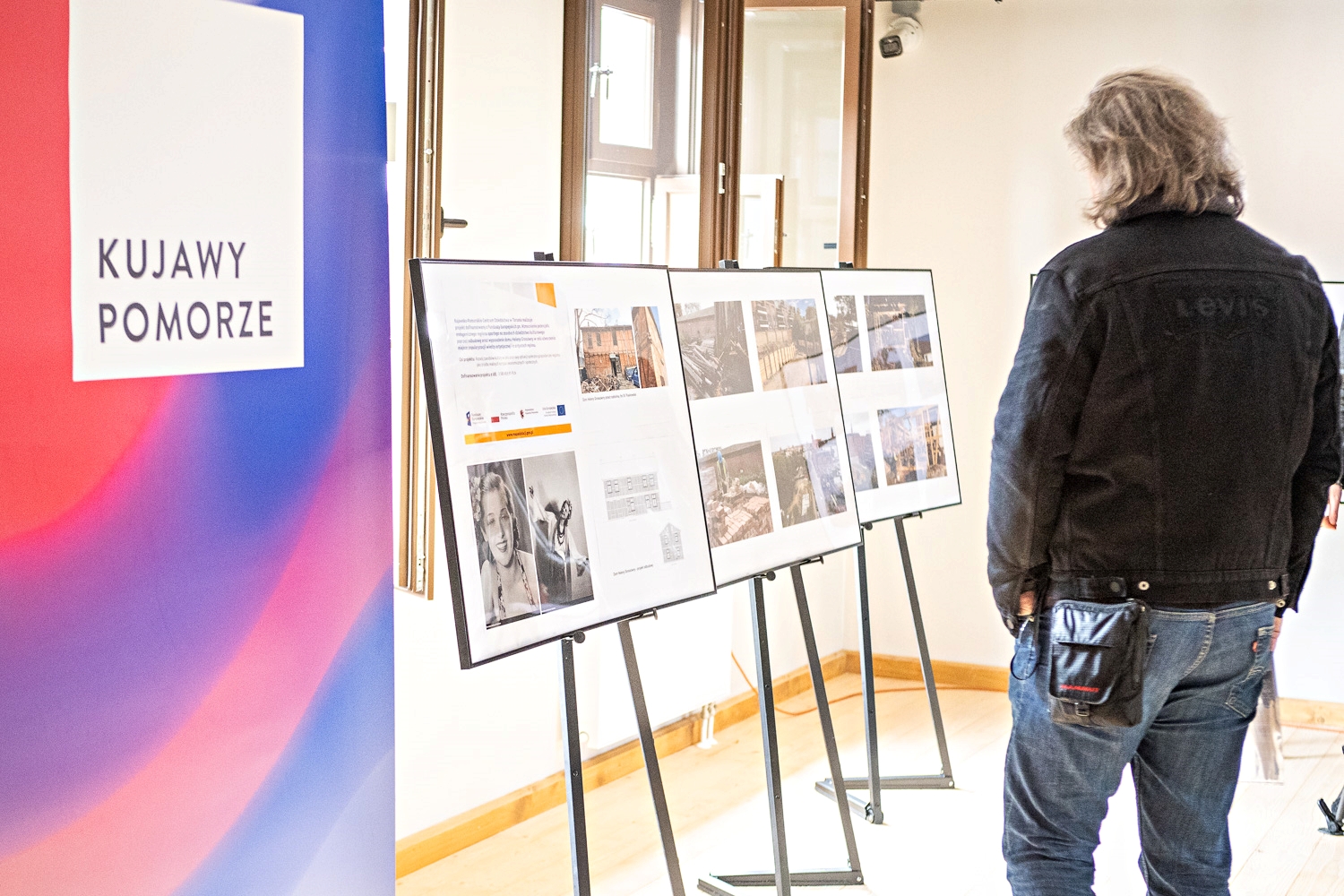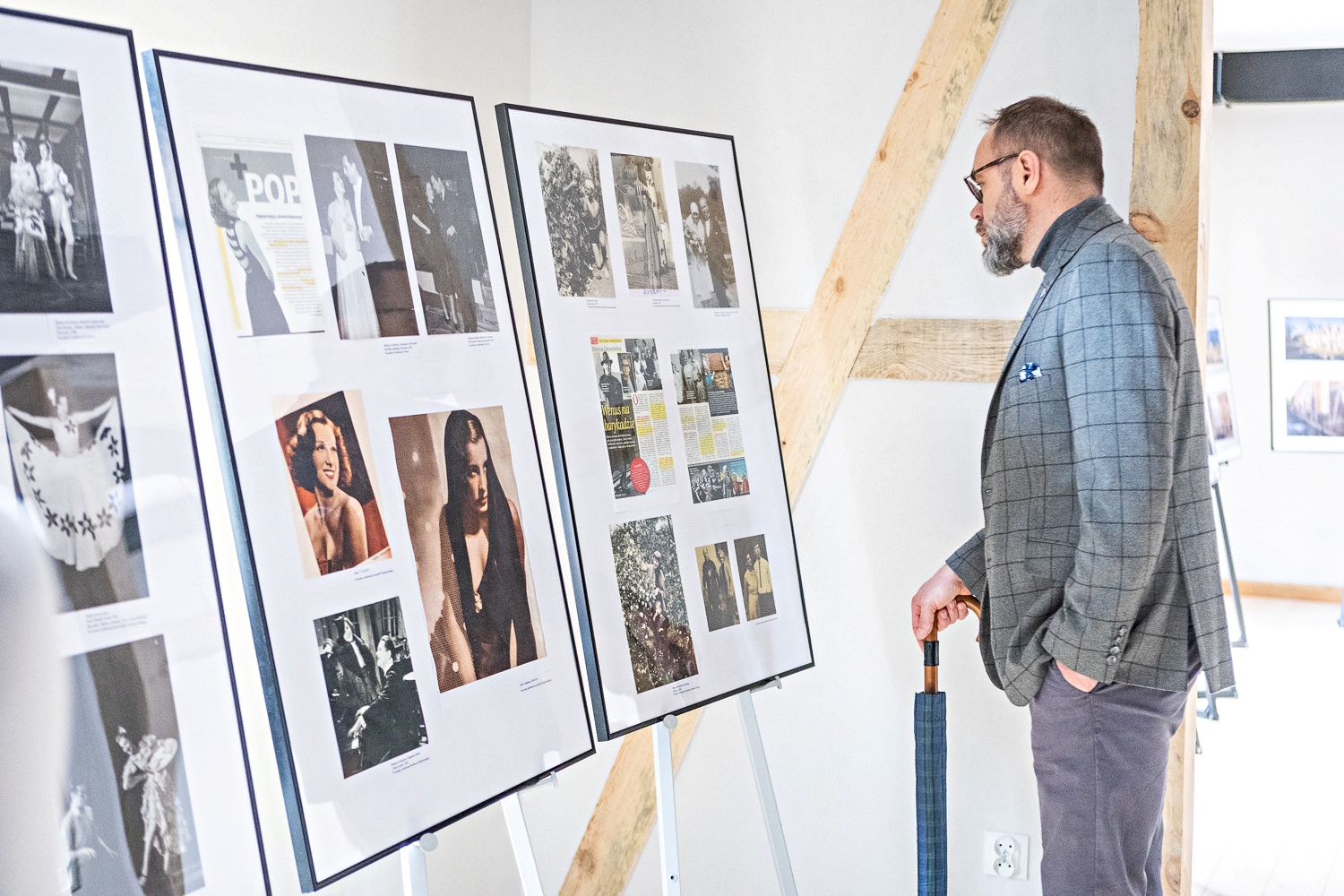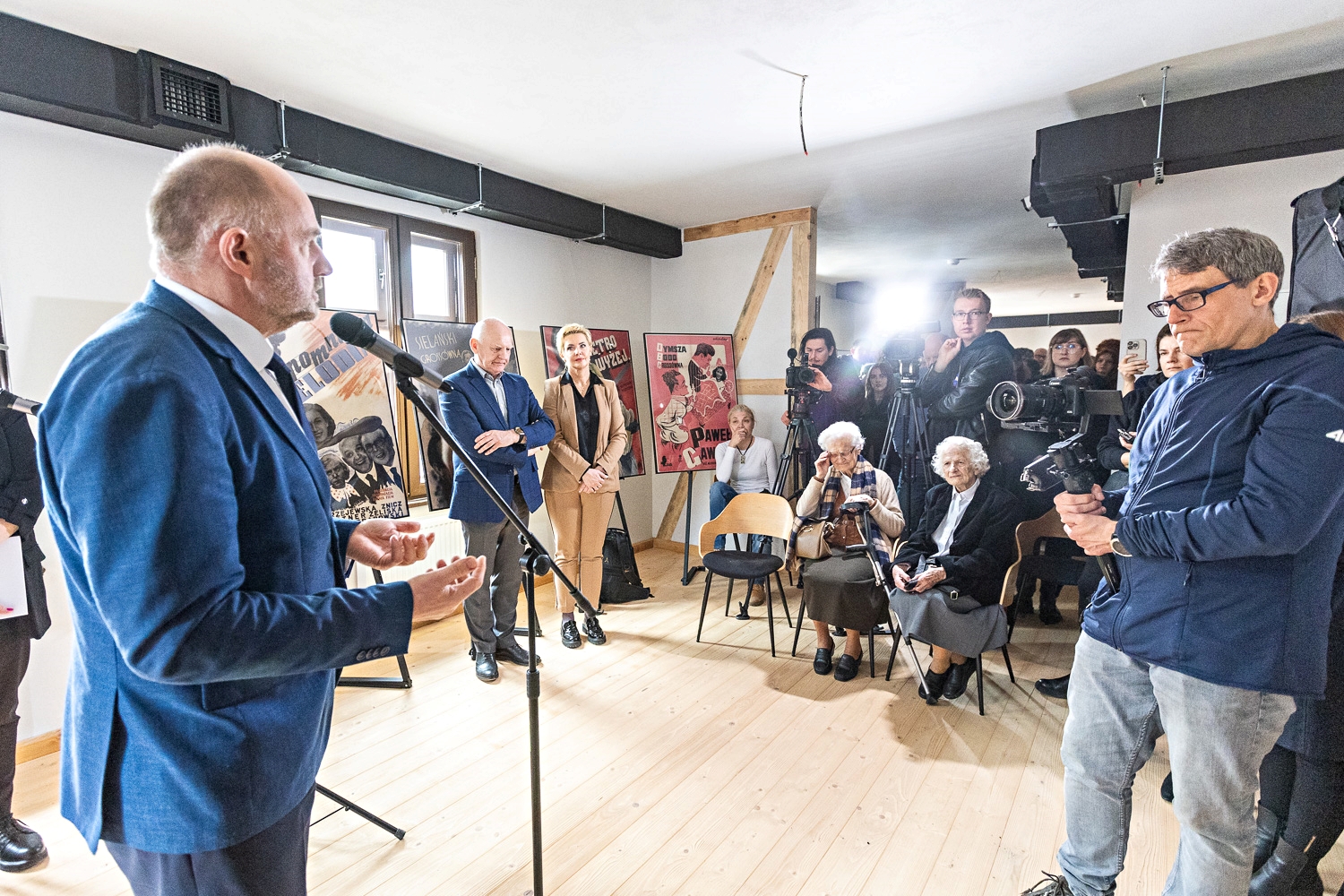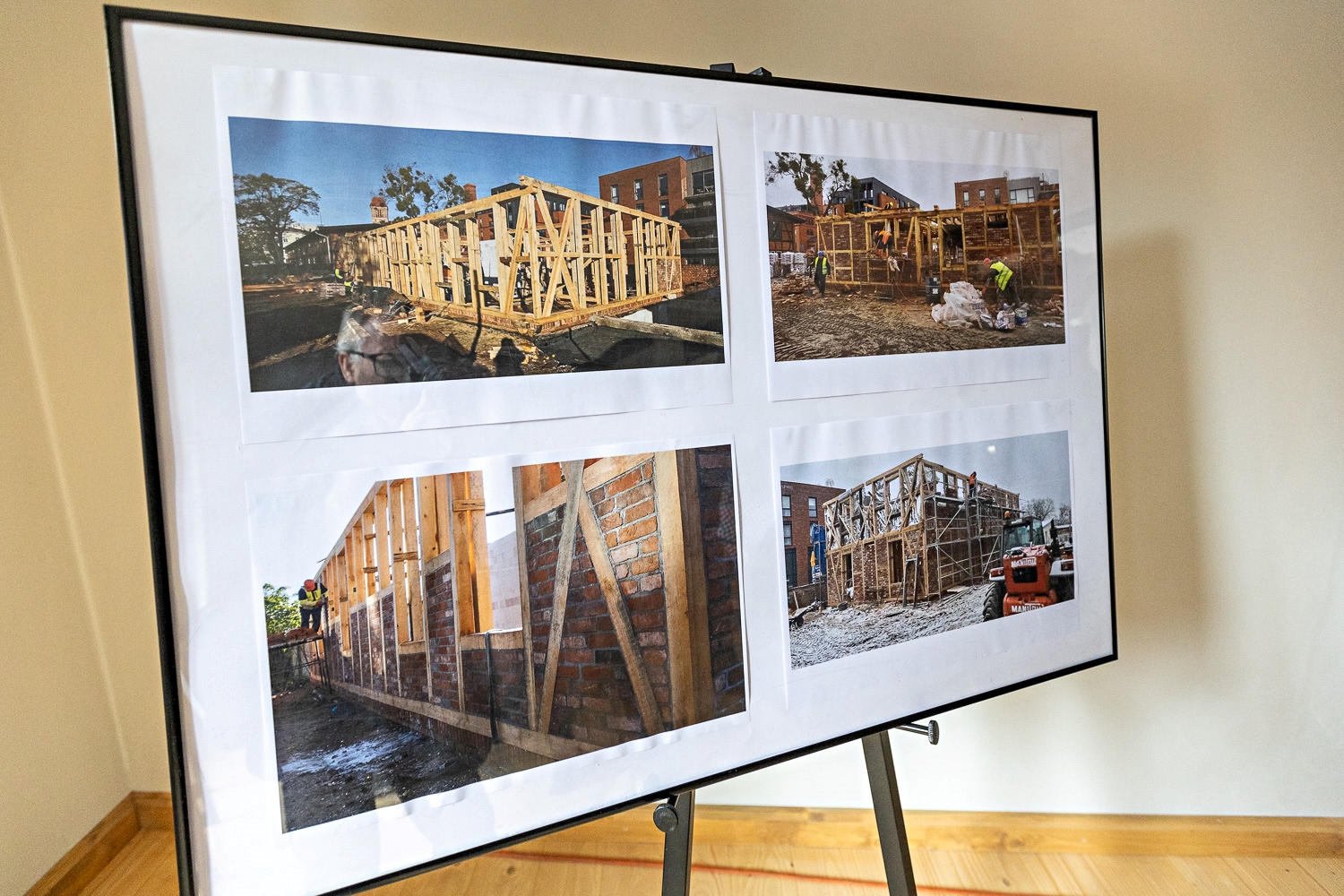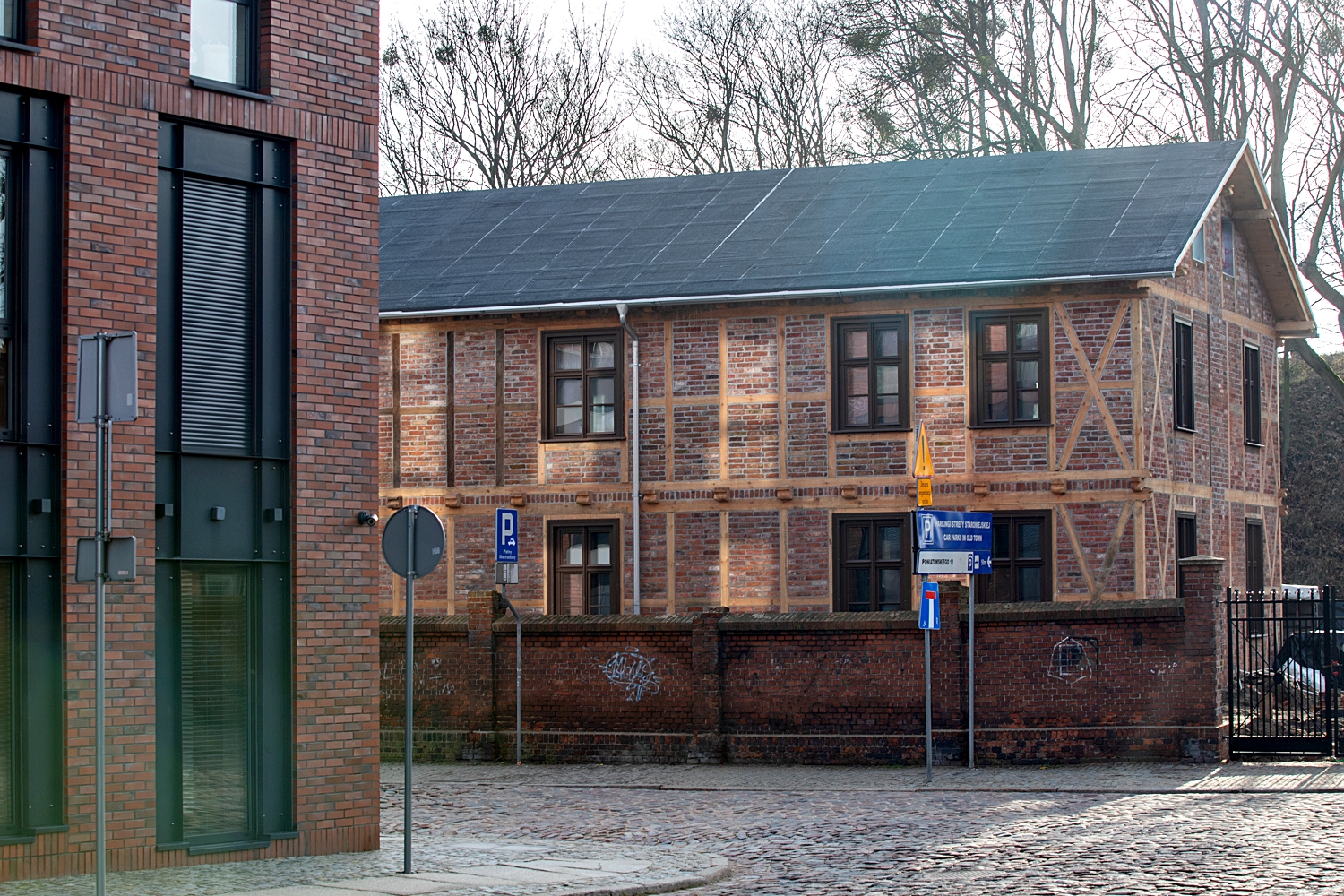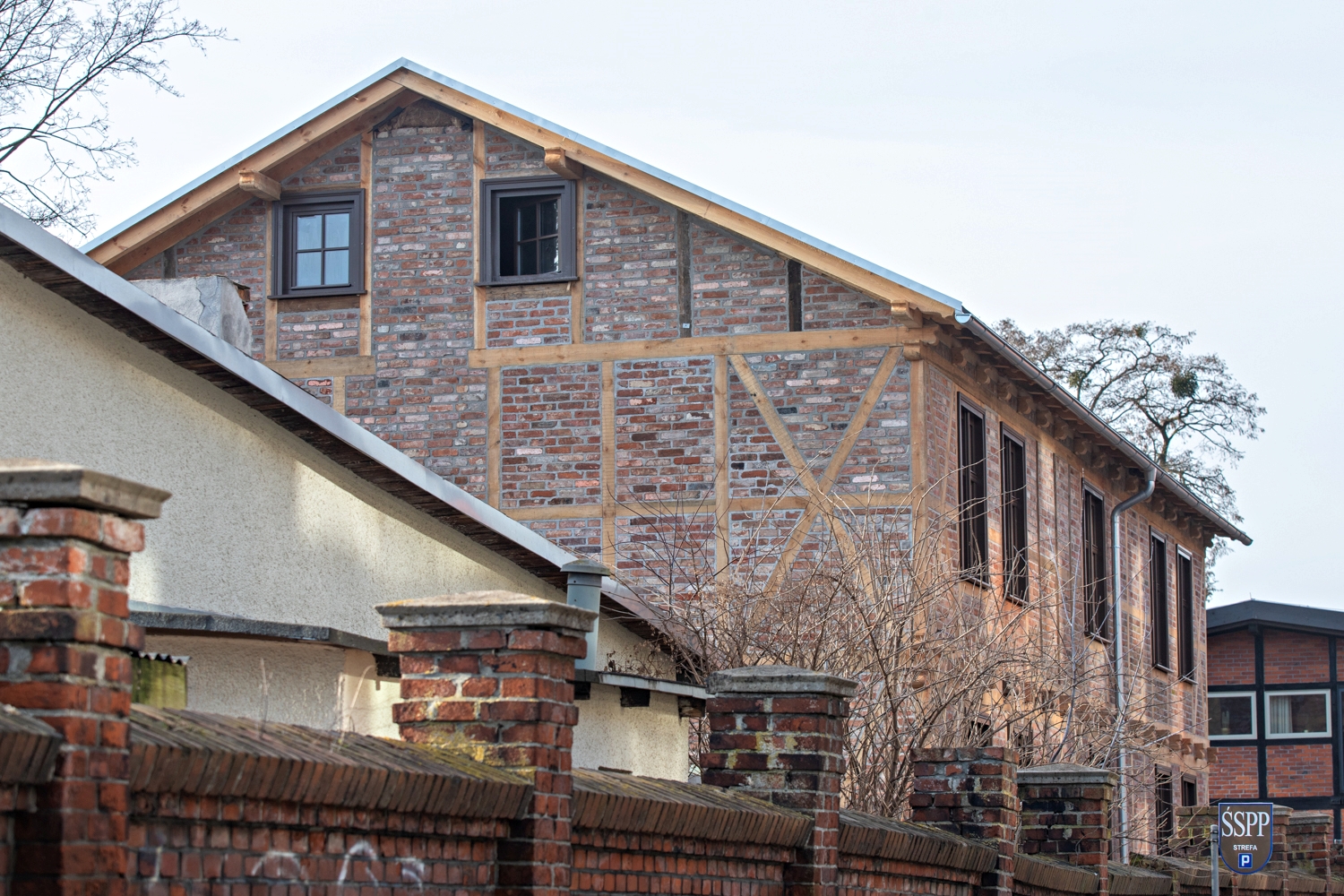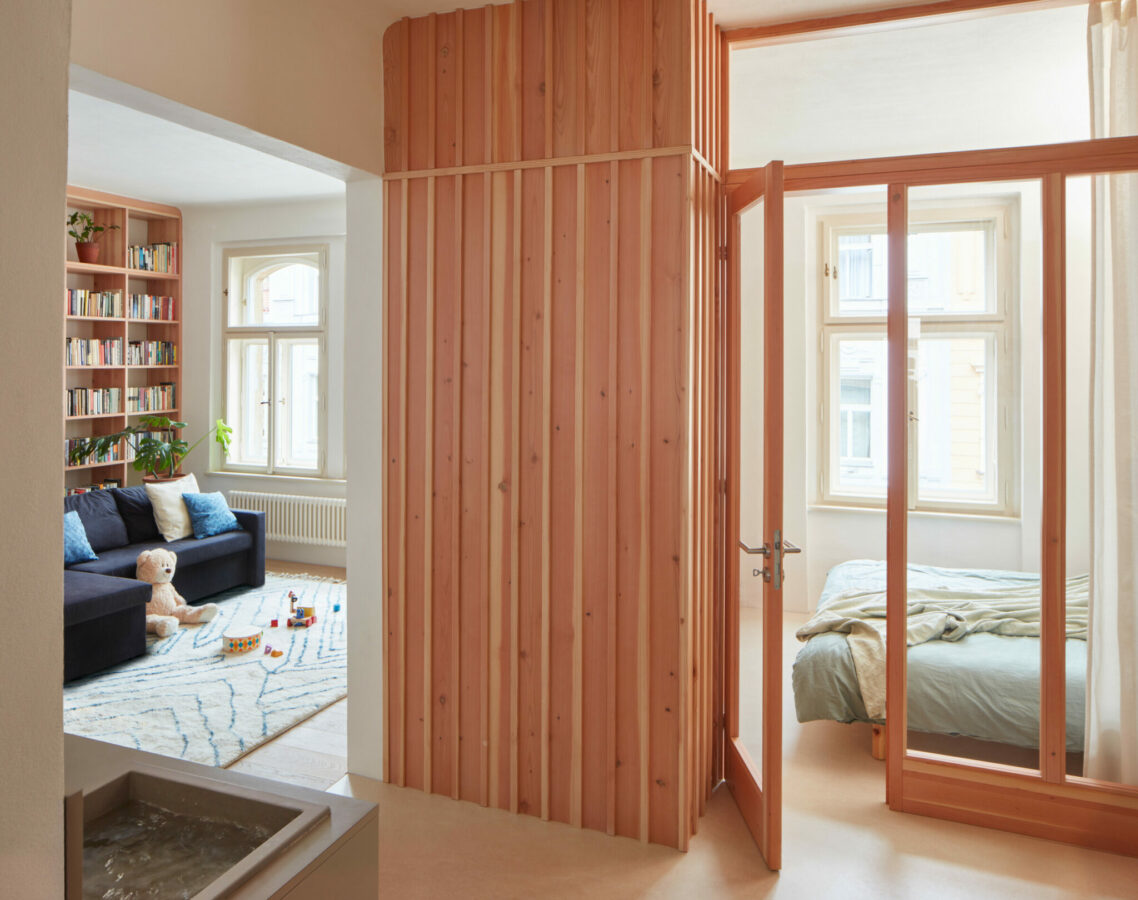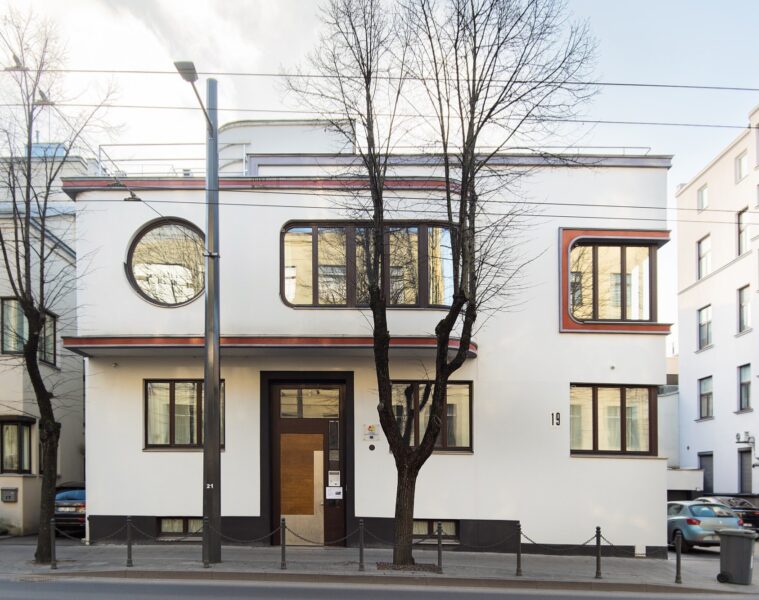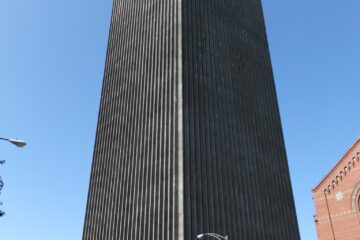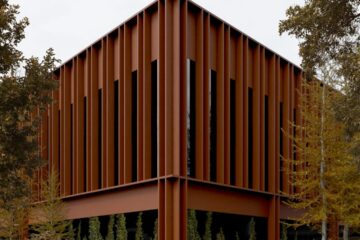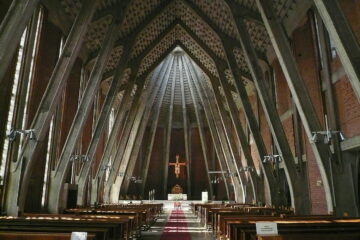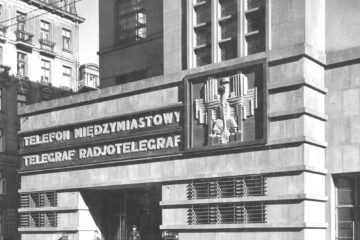A reconstructed Grossówna house, where the artist lived in her youth, has been erected at Wola Zamkowa Street in Toruń. The final works have now been completed and the reconstructed building has been officially opened. Young people have gained a space here for meetings and creative work. The nineteenth-century building was saved thanks to the initiative of Marshal Piotr Całbecki. The project was carried out by Karol Cudziło Architektura i Budownictwo.
“I am glad that we managed to recover this building. It reminds us of Toruń full of half-timbered buildings, of which there are fewer and fewer. We are preserving this heritage to appeal to future generations on a par with Gothic. We pay tribute to all those who built and lived in such buildings,’ said Marshal Piotr Całbecki.
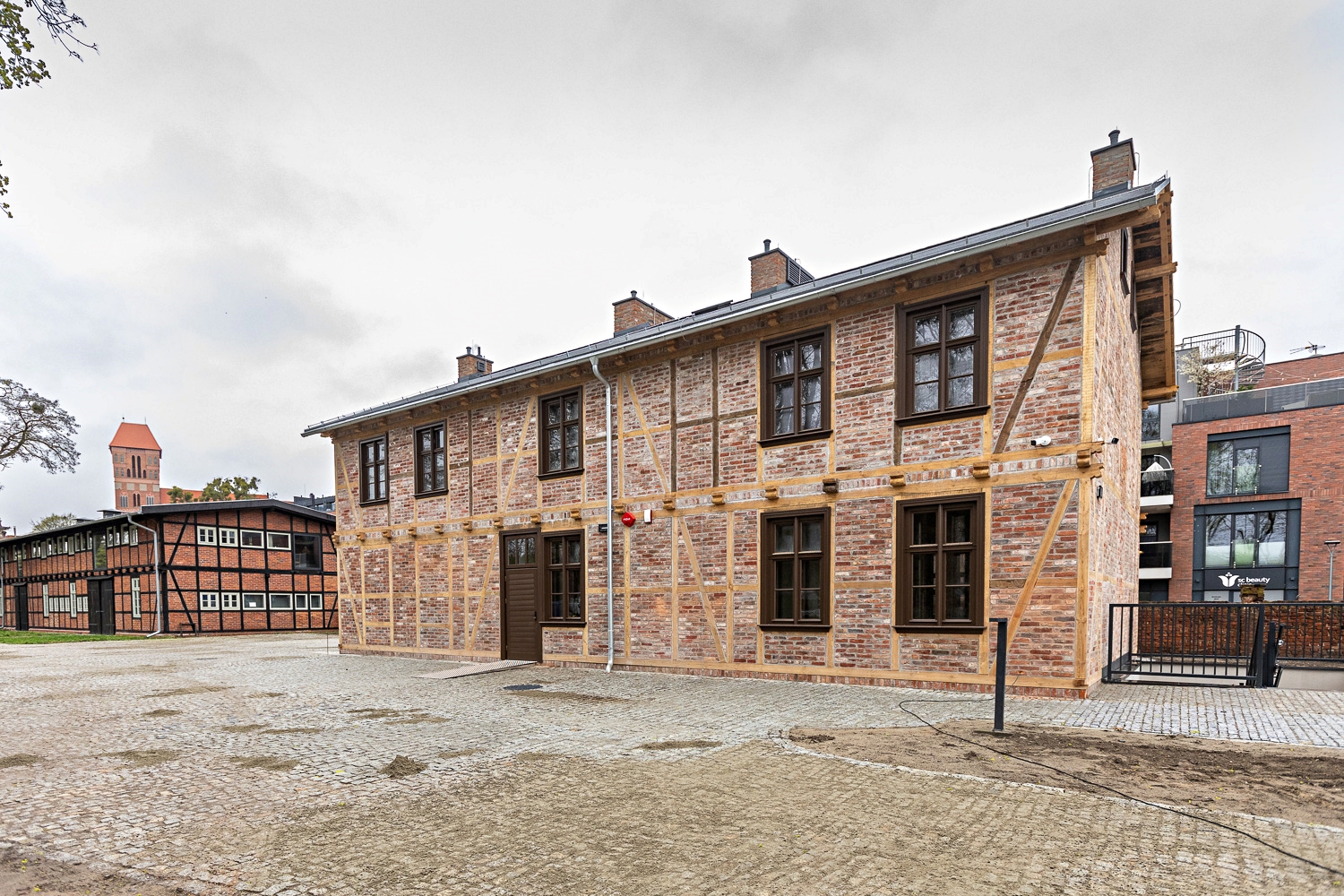
Actress, dancer and Warsaw Uprising participant Helena Grossówna lived in Toruń in her youth. She was one of the most popular Polish stars of pre-war cinema. Until 1939 she was regarded as the audience’s favourite. During World War II, she joined the ranks of the Home Army and after the uprising was imprisoned in prisoner-of-war camps in Germany. Upon her return to Poland, she joined the Syrena theatre in Warsaw. She retired in the 1960s. The artist died on 1 July 1994 in Warsaw. She was buried in the cemetery in Zerzno.

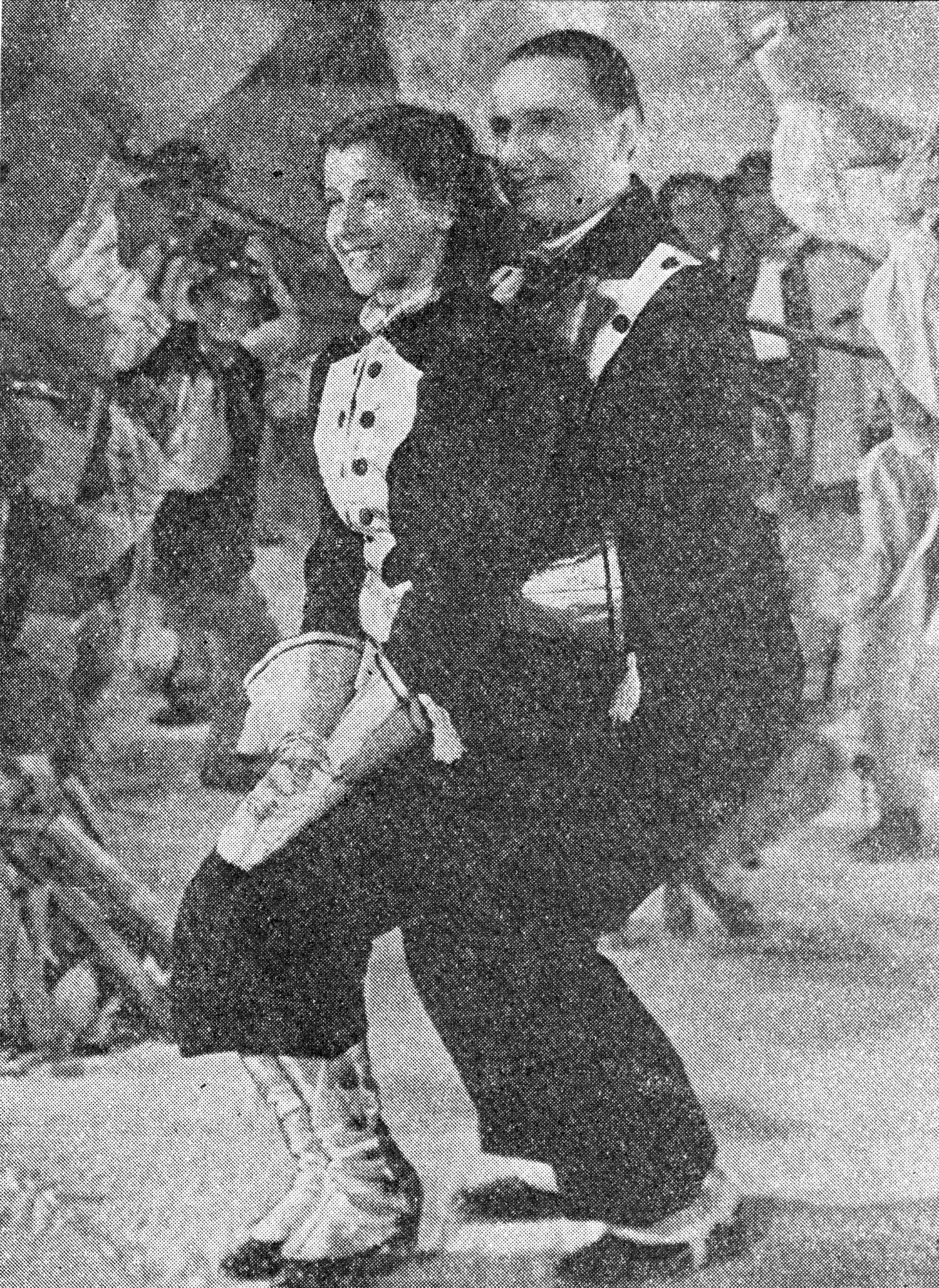
The building was erected in 1890 by Toruń farmer Gottlieb Schütz. Due to building restrictions in the fortress area, the house was built in a frame construction with brick infill. Between 1918 and 1928, widow Waleria Gross lived on the first floor with her daughters (including Helena) and son.
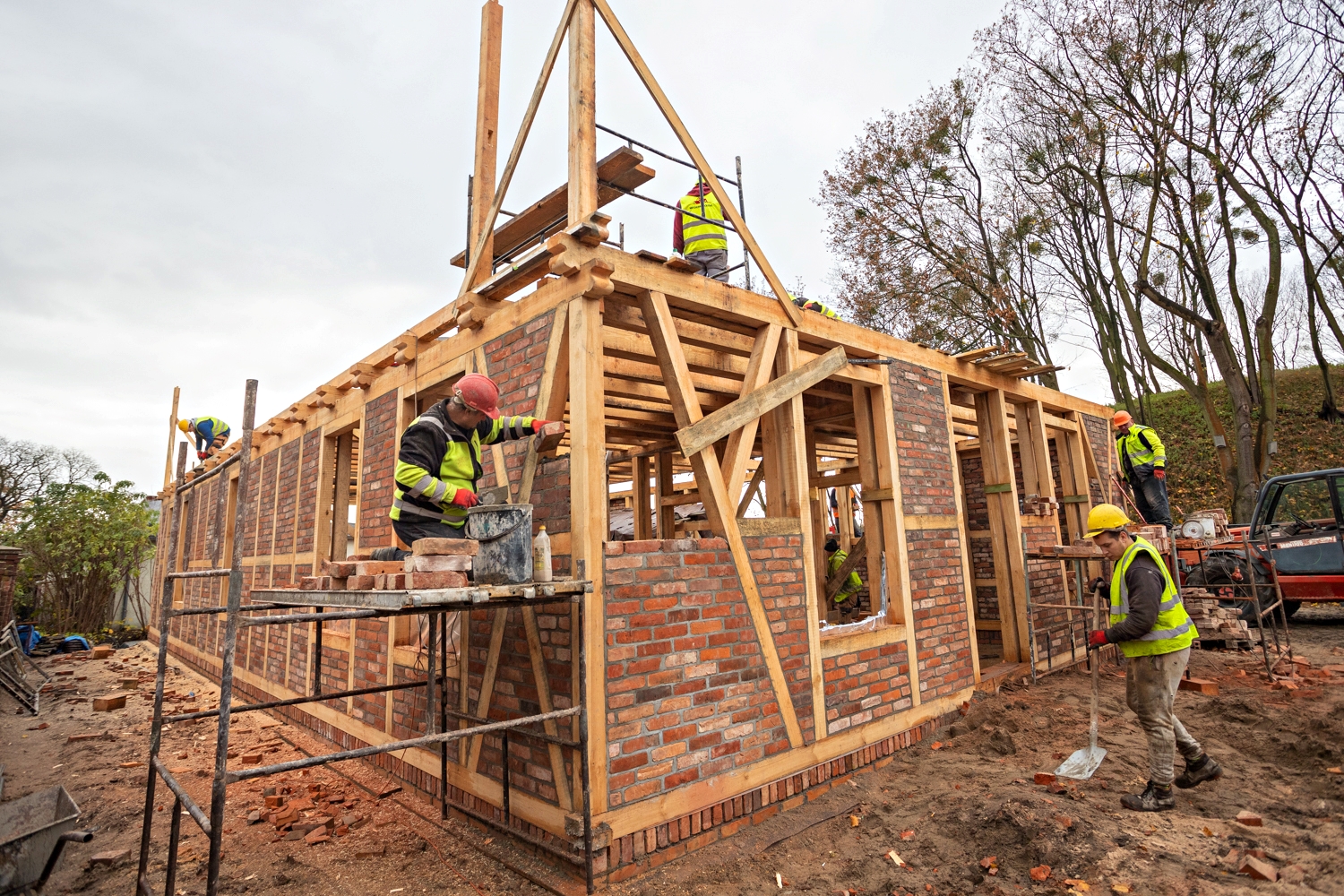
The house stood on Polskiego Czerwonego Krzyża Street and was in danger of being demolished. Years of neglect had contributed significantly to the poor condition of the historic building. A car park next to a new block of flats was to be built in its place. The planned demolition of the building caused widespread uproar and public discussion about the ongoing destruction of Toruń’s architectural heritage. After being entered in the register of monuments, the property was taken over by the provincial government. In 2022, the house was inventoried and demolished and its elements transported to the site on Wola Zamkowa Street.
Grossówna’s house before and after reconstruction at the new site. Photo: Google Maps and Marshal’s Office in Toruń
Due to the poor condition of the building’s wooden elements, it was necessary to restore them. Instead, the builders managed to partially salvage and use 19th century brick. As part of the work, new installations were installed, all plaster and ceilings were replaced. The building was equipped with a lift and a platform for people with disabilities. The reconstruction was closely supervised by a conservator and its contractor was the Modern House company of Józef Stasiak from Raba Wyżna. In the relocated building, an institution was created that serves as, among other things, a club, a community centre, and is also a memorial to Helena Grossówna and another pre-war cinema star, Pola Negri, who came from Lipno. Funding for the reconstruction of the house was received by the Kujawsko-Pomorskie Heritage Centre from the Regional Operational Programme 2014-2020, with the Kujawsko-Pomorskie Regional Investments company acting as the replacement investor.
Source: Marshal’s Office in Toruń, kujawsko-pomorskie.pl
Read also: Architecture in Poland | Monuments | Toruń | Renovation


